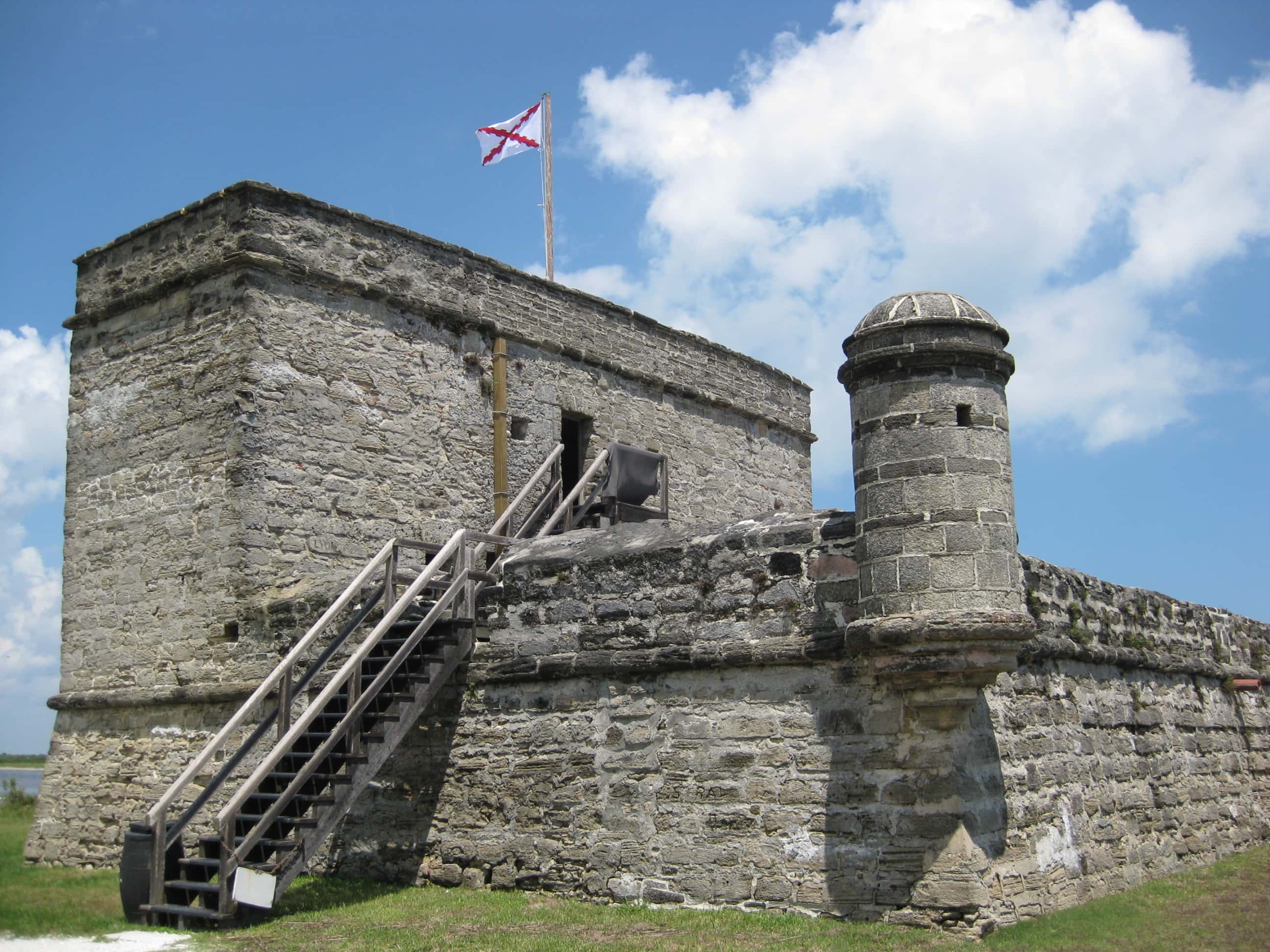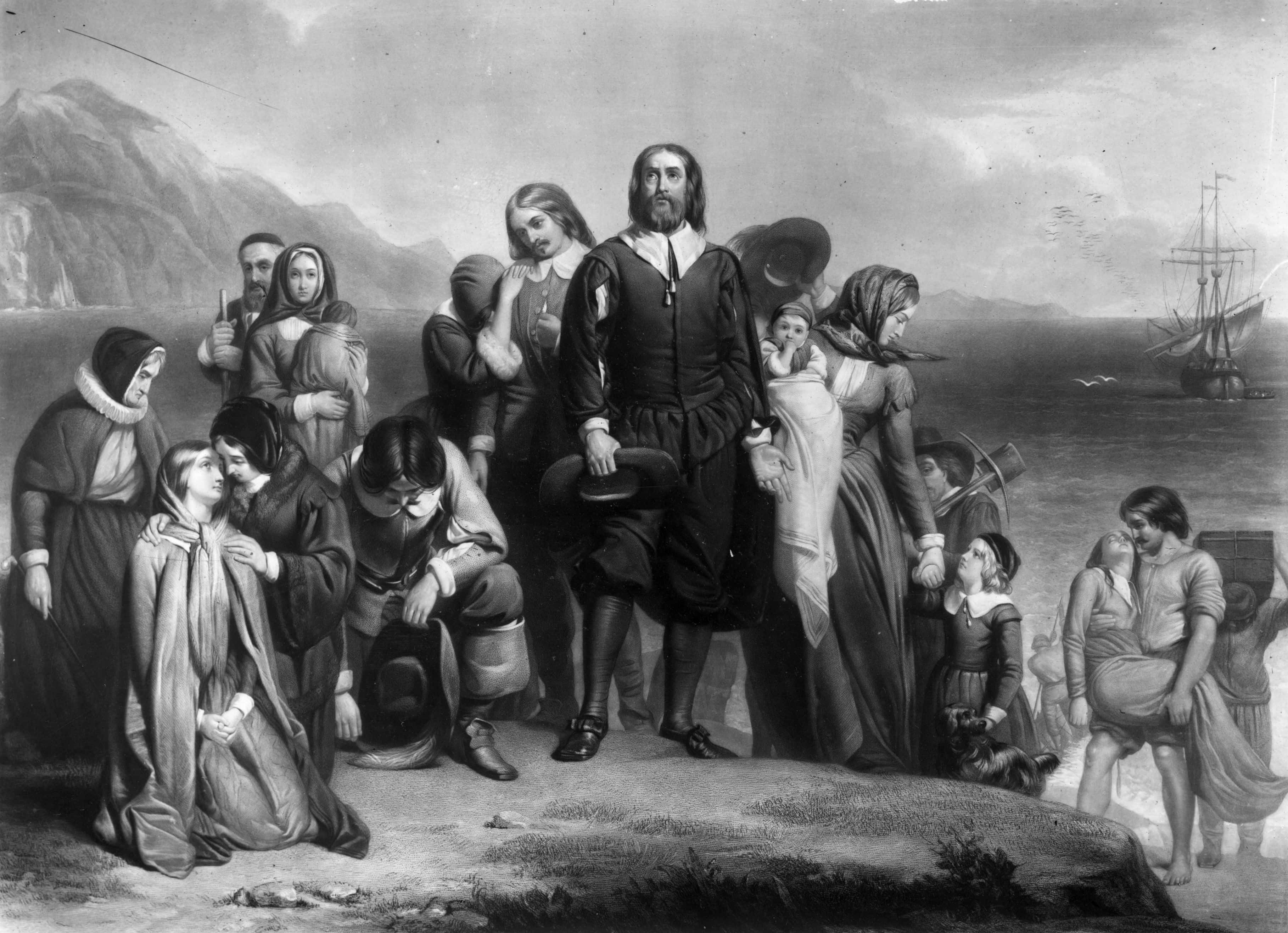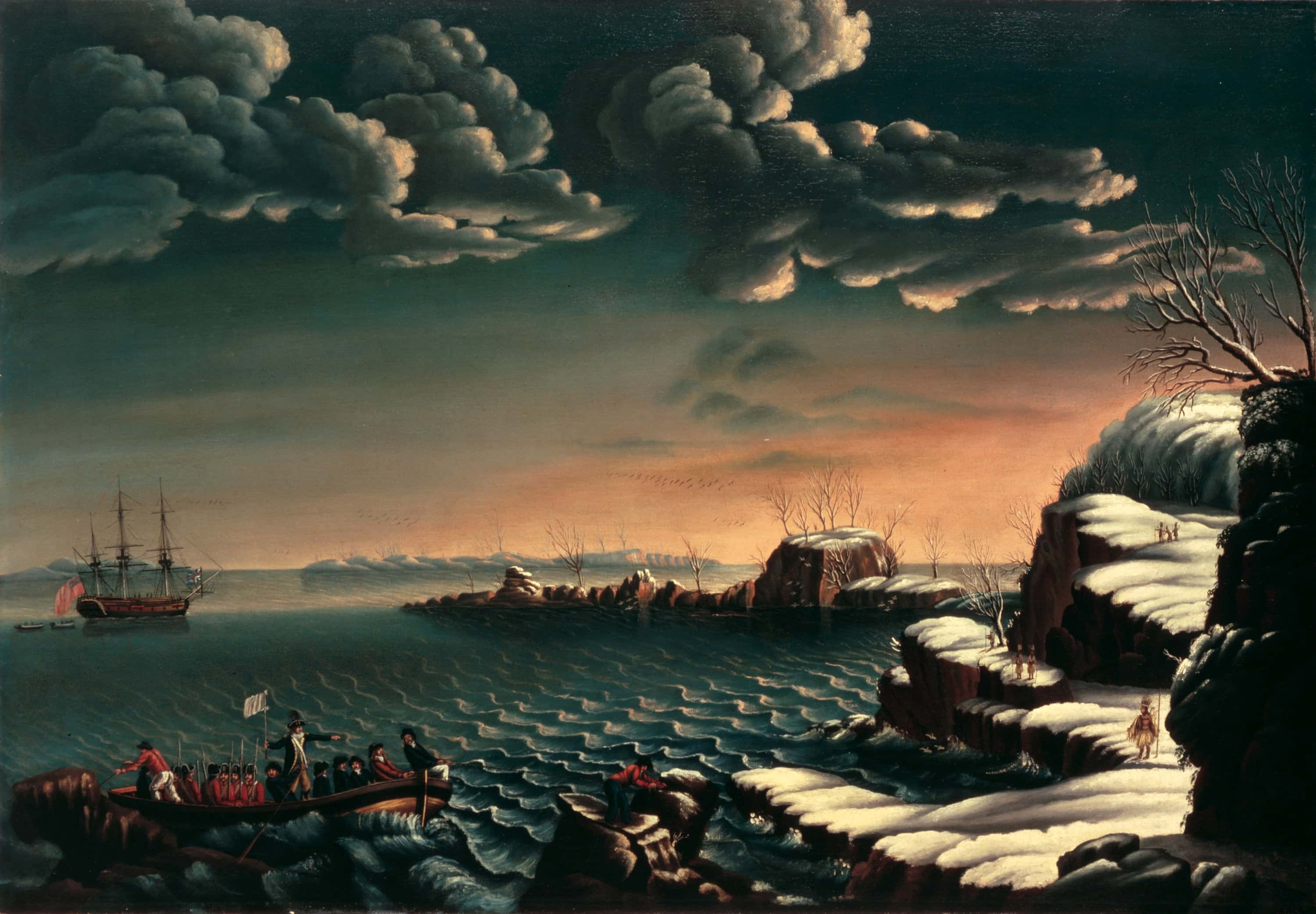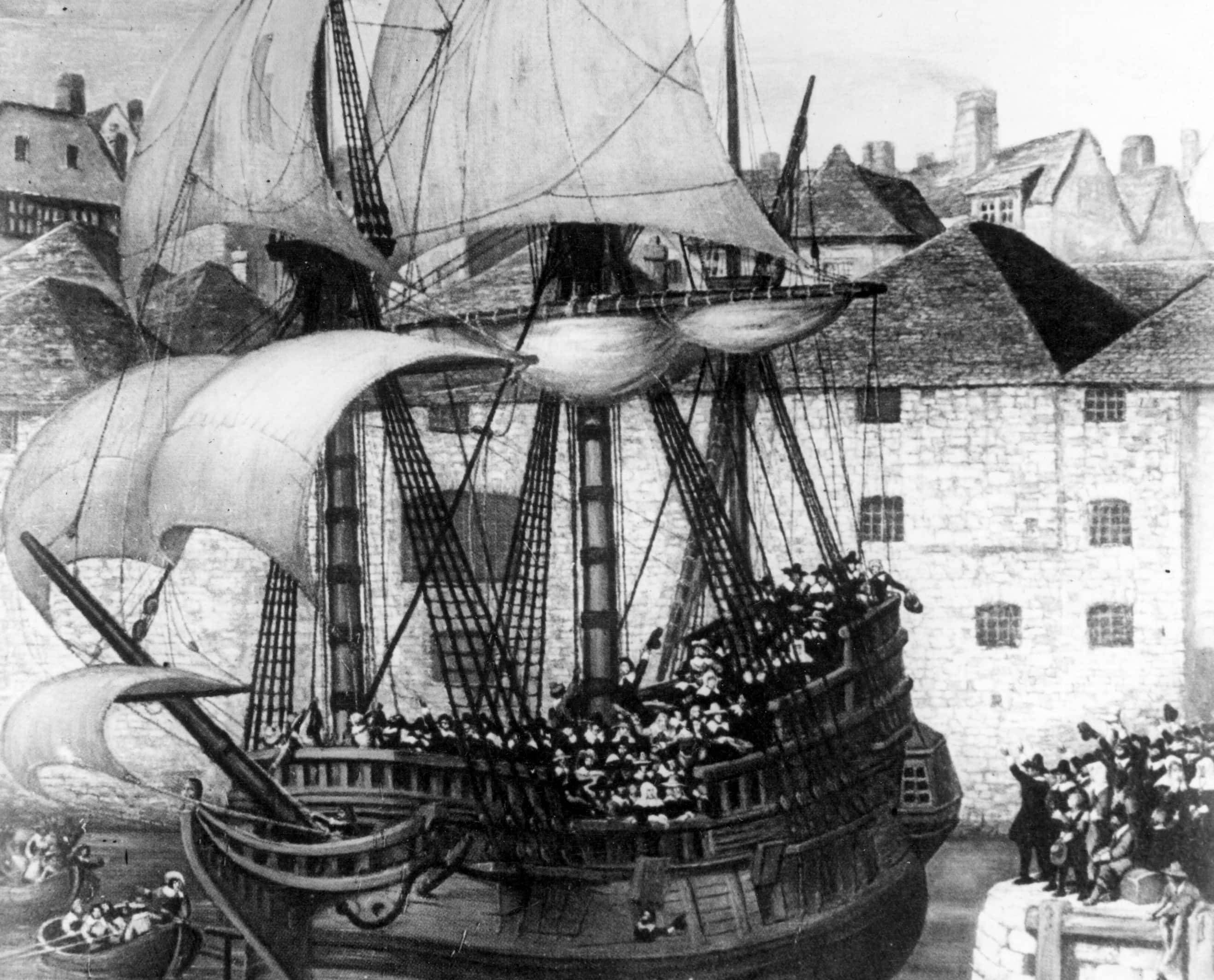This is a classic tale about the origins of the United States. A group of pilgrims, who were fleeing from England due to their harsh treatment, arrived on the shore of the New World. With the help of the Aboriginal tribes, these pilgrims carved out a life for themselves in the wilderness, helped by their staunch Puritan values. But is this the accurate version of how things happened? What facts have been forgotten or ignored in favor of the story told in school? Keep reading to find out more about the pilgrims!
1. Original Location
One of the classic myths about the pilgrims’ journey is that they landed at Plymouth Rock when they finally reached the New World. However, the truth is that they actually landed somewhere else first. The Mayflower originally made land on the tip of Cape Cod, but bad weather caused them to find another place to settle. Plymouth was ultimately picked.

2. Pack Of Scavengers!
Since we’ve brought up Plymouth, the reason that the pilgrims chose it as their new home was that the land had already been cultivated and settled! A town of Aboriginals had originally lived on that land, but for reasons we’ll get to later, they weren’t around when the pilgrims showed up. Not only was there a deserted town, but fields had been cultivated with corn and other crops.
3. What Do You Look Like Again?
The traditional idea of a pilgrim’s attire has often been listed as including fine black clothing with a steeple hat with a belt buckle on it. However, this is an inaccurate portrayal which began in the 19th century and overshadows the history to this day. The idea of black clothing only comes from the fact that these Puritans would dress in their “Sunday best” while posing for portraits, and these clothes were often black.
There was, in fact, no real difference in attire between these Puritan communities and the English population they left behind.
4. True Believers
The reason often given for why the pilgrims left England is freedom from religious persecution. However, it’s worth noting that only about half of the pilgrims were actually Puritans motivated by religious reasons. There were several people on board the Mayflower who were sympathetic to the Puritan cause, but who weren’t actually practitioners.
5. In For The Money
Another significant percentage of the pilgrims were only there because they were being paid! Regardless of whether they were employed as laborers, proficient artisans, or security personnel trained in combat, they were just one dishonored check away from abandoning the entire enterprise!
6. Not So Bad After All?
We do need to point out that there was a significant difference between those pilgrims who were Puritans and those who were not. The Puritans would settle the land north of Plymouth and were incredibly strict in their faith, as well as hostile towards outsiders. The pilgrims at Plymouth, however, were quite tolerant by comparison. Allegedly, they didn’t even try to convert their Aboriginal allies to their faith when they first established themselves.
7. Silver Medal
The settlement of Plymouth, which was established by the pilgrims in 1620, was the second English colony to successfully do so in North America. The first one, as you probably know from the films about Pocahontas (not including Avatar), was Jamestown, in what would later be Virginia, which had been set up in 1607.
8. We Brought A Translator For Nothing?
You might be wondering how the pilgrims first communicated with the Aboriginals of the New World when there was such a language barrier between them. Well, the true answer is that there was no language barrier! Many of the Aboriginals they met, including Squanto, spoke fluent English. Due to past experiences with Europeans (more on that later) the language barrier had been broken long before the pilgrims ever left England!
 Flickr, Internet Archive Book Images
Flickr, Internet Archive Book Images
9. I’d Love A Pint
Aside from Squanto, one of the Aboriginals that the pilgrims first befriended was a man named Samoset. His initial enquiry to the pilgrims pertained to a request for the alcoholic beverage he had already tasted due to previous encounters with Europeans.

History's most fascinating stories and darkest secrets, delivered to your inbox daily.
10. No Luck Here, Let’s Go
The Puritan leadership of those pilgrims who sailed from England for the New World had originally tried to settle in the Netherlands. They fled England and tried to set up shop in the Low Countries, but the venture failed due to financial problems and the departure of many younger members for better opportunities.
There was also a concern that their culture would be lost within the Dutch population, which kind of went against their strict Puritan beliefs.
11. One Ship Doing The Work Of Two
Originally, the Mayflower was meant to be one of two ships that the pilgrims would use to sail west. The Speedwell had been used to transfer the would-be pilgrims from the Netherlands to England, but it was deemed to be too damaged for a voyage across the Atlantic. Many of the Speedwell’s passengers transferred over to the Mayflower as a result.
12. You Couldn’t Make It Up!
Remarkably, the pilgrims didn’t actually name Plymouth when they arrived—it was already called Plymouth on preexisting maps. The fact that the pilgrims sailed out of Plymouth in England and settled in Plymouth in the New World was a complete coincidence!
13. Old Slang Was Weird…
It’s almost never mentioned, but the pilgrims had a rather stormy relationship with the crew of the Mayflower. The pilgrims were unused to sailing, particularly on the high seas, and they were often seasick. This greatly amused the experienced sailors, who allegedly called them “glib-glabbety puke stockings.” Keep in mind, this was a much different time.
14. Less-Than-Ideal Conditions
To be fair to the queasy pilgrims, seasickness was almost the least of their problems. Life aboard the Mayflower was quite brutal, given that the ship wasn’t meant to house so many people (there were 106 pilgrims and 30 sailors on board). Over the course of 66 days, the pilgrims spent most of that time cooped up in the bottom of the ship with no means to wash themselves, disgusting food, buckets instead of toilets, and almost no changes of clothing!
15. Gross!
Speaking of that disgusting food on the Mayflower, the overwhelming majority of the rations that the pilgrims lived on during their voyage were dry biscuits called “hardtack.” As boring as that already sounds, the food was made a bit more “exciting” by the insects regularly infesting the biscuits. At least that’s some good protein, right?
16. Land Ho!
The pilgrims first reached the shores of North America on November 9, 1620.
17. Hardly Unique
Interestingly, the pilgrims weren’t the only ones to have a ship called the Mayflower. According to the contemporary record-keeping of the time, there were 26 vessels named Mayflower in England during the reign of King James I (one of them being the pilgrims’ ship). There is no explanation yet discovered why this name was so popular at the time.
18. Full Complement
According to the writings of Charles Banks, the crew who sailed the Mayflower and the pilgrims to the New World included “a captain, four mates, four quartermasters, surgeon, carpenter, cooper, cooks, boatswains, gunners, and about 36 men before the mast.”
19. I’ll Take A Steak Instead!
If there’s one thing about the northeast coast that everyone knows about, it’s that they love their seafood, particularly lobster. However, when the pilgrims first arrived in North America and were introduced to the concept of eating lobster, they were utterly repulsed by the taste. Maybe they’d been eating too much hardtack to know what good food was?
20. When Do We Invent New Political Parties?
When the pilgrims first landed on North America, they had only rudimentary plans in regards to the establishment of a settlement. Attempts had been started on the voyage west, but it wasn’t until they’d landed that the process was completed. This contract between the pilgrims to form a “civill body politick” which was democratic in nature became known as the Mayflower Compact.
21. That’s Our Leader!
The foremost of the pilgrims was undoubtedly John Carver. It had been he who had chartered the Mayflower in the first place, and he was chosen by the pilgrims to be their first governor. His signature is the first on the Mayflower Compact.
22. The Colonialists’ Plague
As would become typical for Europeans in the New World, the pilgrims spent their first winter suffering badly from scurvy. This illness, caused by a lack of vitamin C, leaves its victims vulnerable to infections, gum disease, and bleeding from their skin. Many Europeans would die of scurvy during the years of colonialism.
 Flickr, Internet Archive Book Images
Flickr, Internet Archive Book Images
23. The Story Of Squanto
Let’s take a moment to talk about the pilgrims’ greatest ally, Squanto. You might be wondering where he came from and how he was able to speak English to the pilgrims. His real-life story alone could inspire a movie—but it would likely face criticism for being too hard to believe. Squanto grew up in Cape Cod before being kidnapped by Europeans and taken to Spain, where he was sold into slavery. Squanto escaped, however, and learned enough English to persuade someone to take him back across the Atlantic.
By the time he returned, however, his entire tribe, the Patuxet, had been wiped out by disease.
24. That’s Who We Are!
The first person to refer to pilgrims as “pilgrims” was William Bradford, who led the Plymouth Colony for many years after it was established. Bradford’s written work titled Of Plymouth Plantation quotes the Bible’s Old Testament when he compares himself and the colonists to the “strangers and pilgrims” mentioned in Hebrews 11:13-16.
Leave it to the pilgrims to name themselves after something from the Bible!
25. Who Brought The Pet Food?
Given how cramped things were on the Mayflower, the pilgrims didn’t bring any cows, horses, mules, or other beasts of burden with them on the voyage. They did, however, bring goats, pigs, and chickens. Some of the pilgrims also brought pets. Two dogs, several cats, and at least one pet bird made the voyage with their owners.
26. Give It Time, Let It Catch On
Despite the early comparison to Biblical “pilgrims,” the pilgrims weren’t popularly known as such until the late 18th and early 19th centuries, more than two hundred years after the Plymouth Colony was first established.
27. Stormy Past
Any student of history will know that the journey of the Mayflower to North America wasn’t exactly a novel experience for humanity. However, it wasn’t even a novel experience for many of the people on board! In fact, one of the pilgrims was a man named Stephen Hopkins. He had previously attempted to sail to the settlement of Jamestown in Virginia 10 years earlier.
However, his ship was blown off course and wrecked off the coast of Bermuda.
28. Incredible Artistic Adaptation
Speaking of Stephen Hopkins’ unfortunate shipwreck prior to his experience on the Mayflower, his failure to reach North America did inspire the greatest playwright in the history of the English language. William Shakespeare, by his own admission, based his play The Tempest on the ship which had left Hopkins stranded on Bermuda.
29. Now That’s What I Call A Long Night!
During that first winter in North America, the pilgrims were worried about the Aboriginals finding out just how many of them were dying. Consequently, they attempted to hide their distressing rate of fatalities by interring their departed during the night. In the heart of winter, at that!
30. That Was Cold-Blooded!
Before the Mayflower sailed from England, it became involved in a family drama fit for The Jerry Springer Show. Samuel More was deeply suspicious that the four children born to his wife, Katherine, weren’t his, but rather the illegitimate offspring of Katherine’s lover Jacob Blakeway. Though Katherine denied it, Samuel managed to divorce his wife.
Since English law somehow decided that he still had full custody of the four children, he sent them all on the Mayflower to spite his ex-wife. All but one of the children would die during their first winter in North America.
31. Not Bad For First-Timers!
At the time of the pilgrims’ voyage, the Mayflower was captained by Christopher Jones. He was a middle-aged man from Essex who had captained the Mayflower for years while working in the European cargo business. However, the pilgrims’ voyage west was the first time that Jones or his ship had ever made a trans-Atlantic voyage.
32. Not The French Again!
Believe it or not, the pilgrims weren’t even the first “pilgrims” to go west. More than 55 years before the Mayflower set sail, a group of French pilgrims set themselves up in a place called Fort Caroline in Florida. Their goal was to avoid the religious wars tearing Europe apart at the time.
33. Sacré Bleu!
The French pilgrims’ plan to hide from religious strifes in the New World might have worked, but they settled too close to colonies owing allegiance to Spain. Because of Spain's solid Catholic convictions and the French pilgrims identifying as Lutherans, conquistadors made a violent attack on Fort Caroline, resulting in the elimination of all its inhabitants.
To add insult to injury, the Spanish colonists remembered this bloody incident by renaming Fort Caroline as "Matanzas" - the Spanish term for "slaughter" or "bloodbath".
 Wikimedia Commons, Intergalacticz9
Wikimedia Commons, Intergalacticz9
34. Preserving The Past
Speaking of William Bradford’s Of Plymouth Plantation, it is now regarded as the most important historical document relating to the pilgrims. Bradford goes over the names of the pilgrims, what happened to them in the colony, and how they ended up voyaging west in the first place. Granted, we have to accept the potential biases of Bradford, but that doesn’t diminish how valuable his writing has become to historians since its creation.
35. We’re Outta Here!
You might be wondering what happened to the crew of the Mayflower after they landed at Plymouth. Given how bad of an idea it was to sail back to England in November, the ship’s crew stayed with the pilgrims through the winter of 1620/1621. Half of them would die during that terrible time. The following spring, the survivors hightailed it back to England.
36. Let’s Not Go Back, Boys…
To add some positivity to the crew of the Mayflower after all the struggles of sailing west and losing so many of their shipmates to the winter in North America, the voyage back east to Europe consisted of literal smooth sailing. In fact, the voyage was so easy that it took them about half the time to get home than it did to get to North America!
37. That’s A Bizarre Twist
One of the most bizarre stories related to the Puritan pilgrims would have to be the trial of George Spencer. Just over two decades after the pilgrims landed at Plymouth, Spencer lived in the New Haven colony which later became part of Connecticut. Spencer was a less-than-handsome servant with a glass eye who was strongly disliked for his trouble-making nature and (more worryingly to the Puritans) his atheism.
One day, however, he found himself on trial for engaging in indecent acts with an animal.
38. Where’s Habeas Corpus When You Need it?!
You might be wondering what prompted George Spencer to be accused of bestiality, and the truth is too bizarre to make up. The Puritan law of the colony argued that God had revealed the truth of Spencer’s degenerate behavior by having one of the piglets birthed that year be born with only one eye...just like Spencer!
Spencer denied the accusation until it was hinted that mercy would be shown if he confessed. Convinced that he wasn’t getting justice any time soon, Spencer decided to go for mercy and confessed. When he realized he’d been duped, Spencer unsuccessfully tried to retract his confession. Because two witnesses had to be available to convict someone, the one-eyed piglet was also brought in as the second witness.
Regrettably for Spencer and the piglet's mother, the Puritans showed no mercy, leading to the demise of both the sow and Spencer. Spencer was, in fact, the first non-Aboriginal to be executed in what is now Connecticut!
39. What A Place To Join The World
Any idea how young the youngest pilgrim was? His name was Oceanus Hopkins, and he was an infant when he arrived in North America. In fact, Hopkins was actually born during the voyage! Remember the conditions we described? Now imagine having to live in close quarters with a woman giving birth amongst over a hundred people without access to a bath or shower.
Now imagine being that poor woman who was giving birth!
40. Exploiting An Apocalypse
You might be wondering how the pilgrims managed to find a decent foothold on the North American coast and settle the land so quickly. Well, in between the voyages of Christopher Columbus and the pilgrims’ arrival, smallpox swept through North America and wiped out countless Indigenous peoples.
Keep in mind that the population left over by the time European settlers arrived were still formidable enough to hold their own for many years in the many subsequent wars. We’re fairly sure that if the pilgrims had tried to muscle their way into North America when the Aboriginal tribes were at full strength, we’d be reading about the most one-sided defeat since the Spanish Armada!
41. Disrespectful Guests
One of the first things that the pilgrims did when they arrived in the deserted town of Plymouth was rob a nearby Aboriginal grave. Upon finding an ancient burial mound, they broke it apart to find many valuables, including seeds for corn. We’d make a cynical joke about this kind of blatant grave robbing being typical of colonialists from then on in the history of North America, but you’ve likely already made that joke in your head.
42. Always Playing The Victim Card, Those Puritans…
The biggest myth about the pilgrims was that they had to flee England to practice their Puritan religion safely. The truth was entirely the opposite situation! The English were in fact excessively accommodating towards other forms of Christianity to the Puritans (this is during an era when Catholics were subject to intense discrimination and Jews were prohibited from setting foot in England for centuries).
The Puritans were motivated to establish a new colony in the west so they could build a new settlement where they could persecute anyone who wasn’t their specific branch of religion.
 Everett Collection, Shutterstock
Everett Collection, Shutterstock
















































